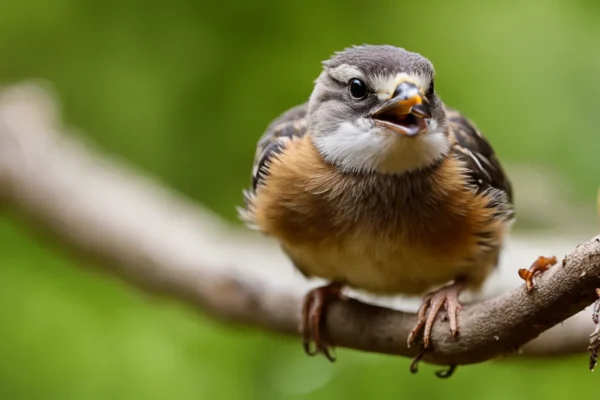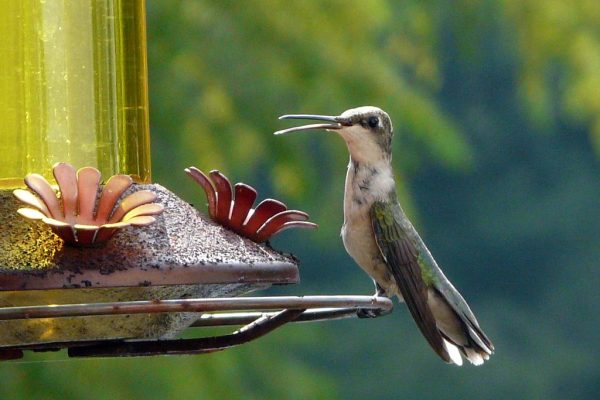Birds construct amazing buildings to nurture and shelter their young. However, do they clean their nests in between mating seasons, or do they leave these worn-out nests standing? Depending on the species, the answer may vary, however, many birds actively remove old material from their nests each year.
We will describe the many bird species’ nesting behaviors in this extensive guide, along with the adaptive significance of maintaining nests.
You’ll discover why birds remove waste from their nests, how they weigh the pros and cons of rebuilding vs reusing, and some unexpected methods they maintain a clean nest. We will also discuss how birds choose their nesting materials, how long certain species stay at a given location, and how bird monitoring might be aided by the identification of active maintenance.
The Function of Nesting Areas
The choice of nesting place is critical to the overall survival and reproductive success of birds and their nests. When choosing a place to lay their nests, birds carefully assess a number of aspects, including environmental conditions, predator protection, and ease of access to food supplies.
Why Do Nests Exist?
Birds use nests as a secure place to deposit their eggs and rear their young. They give insulation during very cold conditions in addition to protection from the elements like wind and rain. Moreover, nests serve as a kind of camouflage, fitting in with the environment to shield the eggs and young from any predators.
Nests serve as both a hiding place and a means of communication. Male birds demonstrate their construction prowess and commitment to creating a secure nesting habitat for their prospective progeny by using their nests as a means of attracting possible partners.
Open Nests vs. Cavities
Cavity nests and open nests are the two primary kinds of nests built by birds. Whereas open nests are formed on branches, ledges, or even the ground, cavity nests are made in pre-existing cavities, such as tree hollows or abandoned burrows.
Because of their enclosed construction, cavity nests provide superior defense against predators. They lessen the chance of nest predation by giving the birds a private area to nurture their young. On the other side, open nests provide quicker access to food sources and improved ventilation.
Benefits of Site Reuse
Numerous bird species have a tendency to return to the same breeding place each year, a phenomenon known as nest site fidelity. The birds get a number of advantages from this behavior. Because they don’t have to start from zero when building a new nest, reusing a nest location saves time and energy.
Additionally, it enables them to benefit from a well-known and productive nesting site.
Reusing a nest location might also provide you a competitive advantage. Birds that successfully rear their young in one area may draw in mates or discourage intruders from infringing on their domain. For certain people, this may result in increased reproductive success.
Cleaning Practices of Species in Groups That Continually Maintain
Certain bird species are renowned for their painstaking nest-maintenance regimens. To maintain a clean and healthy environment for their eggs and young, these birds clean out their nests on a regular basis. The House Sparrow is one such species.
Being meticulous tidyers, house sparrows often clean their nests of trash, feathers, and droppings. They use this action to stop parasites and illnesses from spreading and endangering their offspring. The American Robin and the Blue Tit are two other species that display comparable cleaning habits.
Organizations That Usually Rebuild
Not every type of bird puts cleaning their nests first. Conversely, some birds choose to completely reconstruct their nests. Rather from clearing up and reusing their previous nests, these birds build brand-new ones from the ground up.
Two examples of birds that usually construct their nests every breeding season are the Bald Eagle and the Common Blackbird. By rebuilding, these birds are able to start again and establish a stable, hygienic nest for their young.
This may seem like a labor-intensive process, but it makes sure that there are no parasites, accumulated filth, or any threats within the nest.
Special Techniques for Sanitation
Birds have developed a variety of strategies to keep their nests hygienic and tidy. To keep parasites out of their nests, certain species, like the European Starling, use a method known as “anting.”
By rubbing ants or other insects against its feathers, a bird known as anting produces compounds that deter pests. These substances aid in keeping the nest clear of parasites when the bird returns to it.
The African weaverbirds use yet another fascinating technique. These birds use newly fallen green leaves to decorate their nests. Natural insecticide-like substances found in the leaves keep pests out of the nest and shield the fledgling birds from harm.
It’s crucial to remember that although several bird species share basic cleaning habits, every species maintains its nests in a different way. In order to secure their offspring’s survival and well-being, certain behaviors have developed throughout time.
Keeping Efficiency and Effort in Check
When it comes to nest upkeep, birds need to carefully balance efficiency with effort. In addition to making sure their nests are hygienic and secure for their eggs and hatchlings, they also need to take into account the time and effort required to reconstruct and clean their nests.
Trade-offs in Energy
Birds must continually balance their energy needs in order to live and procreate. It would be more beneficial to use that time and energy to defend their territory or go food scavenging instead of clearing out a nest. When a nest is too unclean or plagued with parasites, birds may decide to give it up completely.
The cost-benefit analysis of putting energy into keeping the nest vs locating a new one served as the basis for this choice.
A study that was published in the journal Scientific Reports claims that some bird species, including the European starling, have very clean nests. By aggressively clearing trash, including fecal sacs, from their nests, these birds lower the risk of illness and draw in predators.
Dangers Associated with Reuse
Some birds reuse their nests for many breeding seasons, whereas others may decide to empty them out on a regular basis. There may be benefits and drawbacks to this. Reusing a nest, on the one hand, saves birds time and energy so they may concentrate on other vital tasks like protecting their home range or locating mates.
Reusing nests, however, may raise the chance of illnesses and parasites spreading to the next generation.
Reusing nests was linked to a greater incidence of parasites such feather mites in tree swallows, according to research from the University of California, Davis. These results imply that, while nest reuse could be practical, there are definite hazards involved that birds need to be aware of.
Recognizing Reoccupation
One of the difficulties birds have maintaining their nests is figuring out whether a nest has been reoccupied by another bird. This is significant since birds like to stay out of rivalries and confrontations with other people.
To ascertain if a nest is being used at the moment, they look for a variety of indicators, such as the presence of new materials or indications of recent activity.
According to a research in the journal Nature Ecology & Evolution, some bird species, including the blue tit, can recognize reoccupation by analyzing chemical cues left by past inhabitants. Olfactory cues, a term for these chemical signals, may provide important details about the presence of possible rivals or predators.
Encouraging Appropriate Nesting Environment
The survival and success of bird breeding depend heavily on the creation and maintenance of adequate nesting habitat. Bird populations may be greatly supported by people if they provide the appropriate supplies. Here are a few strategies to encourage appropriate nesting habitat:
Organic Materials
Natural materials are often used by birds to construct their nests. You may provide birds easy access to twigs, leaves, and grass for their nests by planting native trees, shrubs, and flowers in your yard or garden.
Leaving dead trees or snags in your yard might also serve as a good nesting spot for birds that nest in cavities.
Nest Buildings
By providing artificial nest structures, nesting environment may also be supported. Places for birds to construct their nests that are safe and secure include birdhouses, nest boxes, and nesting platforms. It’s crucial to do study and choose the right nesting structure design for the birds you want to attract, since various bird species have varied preferences regarding size and form.
For instance, construct a nest box with a predator guard and a tiny entry hole to draw in bluebirds. A floating nesting platform on a pond or lake might be an excellent addition to your property if you’re interested in housing cavity-nesting ducks.
Reducing Disruptions
It is crucial to reduce disturbance in order to maintain nesting environment. Pruning and trimming trees and bushes might disturb nesting birds, so avoid doing so during the breeding season. Furthermore, minimize noise levels and stay away from getting too near to nests since this might stress them out and perhaps cause them to be abandoned.
You may foster a friendly atmosphere for birds and assist the conservation and general health of their species by adopting these actions to provide appropriate nesting habitat.
Final Thoughts
While some birds do build a brand-new nest every mating season, a surprising number of species take great care to preserve and tidy up their previous nest locations. Gaining an understanding of this significant breeding behavior can help us better sustain birds in a variety of settings.







One thought on “Do Birds Clean Out Their Nests?”